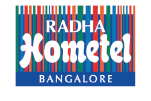Festivals of harvest – How India celebrates its farmers and worships its farms
Festivals have a special place in the Indian ethos. Being a very diverse country, full of rich heritage and mythology, various regions of India celebrate festivals that define their cultural background and tradition. Festivals are marked by traditional attire, mouth-watering food and several rituals and festivities. Each region adds a regional flavour to festivals and so you will notice that different states celebrate festivals differently.
Harvest festivals have a special significance in India. Being a large country with varied geography and climatic conditions, the cropping patterns are very diverse in India. This leads to different regions celebrating festivals at different times of the year. In addition, India is an agrarian economy with agriculture at its backbone. Over 80% of the rural population depends on agriculture for their primary income. Indians treat mother earth with reverence and owe their growth and prosperity to nature. Harvest festivals are a way of expressing gratitude for the abundance that nature showers on us and are therefore celebrated with great fervour.
Harvest is celebrated differently in each state. The festival Pongal is celebrated in the state of Tamil Nadu, Maharashtra celebrates Gudi Padwa and Punjab celebrates Lohri. Every festival includes religious ceremonies and feasts. People come together as a community and express gratitude for a bountiful harvest and recognize the hard work that has gone into the cultivation. These harvest festivals also serve as a social and cultural bonding opportunity. In many communities, these festivals also mark the end of an agricultural cycle and a beginning of a new year.
Despite being rooted in tradition, these festivals also reflect the contemporary values and styles of the people who celebrate them. Let us explore these festivals in detail.
Pongal/ Makar Sankranti
Pongal is a traditional harvest festival celebrated in Tamil Nadu. It marks the start of a new Tamil month “Thai” and is therefore often called “Thai Pongal”. Usually, Pongal falls on January 14th every year. Pongal is also a dish made with rice and a lentil called moong dal. There are two varieties of Pongal: a sweet one made with jaggery and ghee called “Chakkarai Pongal” and a savoury one made with fresh ginger, pepper and ghee called “Ven Pongal”. The dishes are offered to the Sun God along with freshly harvested sugarcane, turmeric, and ginger shoots. Chants of “Pongal O Pongal” are in the air during the preparation of the Pongal dish.
In Maharashtra and Karnataka, Makar Sankranti is celebrated with an exchange of multicoloured halwa (a sticky sweet) and Ladoo (balls made of sesame and jaggery). Lunch normally has a sweet flatbread called Puran Poli. Women normally dress in black. After a bath and exchange of sweets, people also fly kites.
Lohri
Lohri is celebrated in the northern states of Punjab, Haryana, and Delhi. It is celebrated on January 13th every year and marks the end of winter. During Lohri, people light bonfires and sing folk songs. Traditional Punjabi delicacies and freshly harvested and roasted corn are generally offered to everyone. Traditional food like Sarson ka Saag (mustard greens), Makki ki roti (flatbread made of corn flour), radish, jaggery and peanuts are consumed. Sugarcane is also used and sesame seeds and jaggery combine to make a sweet called “Tilcholi”.
Bihu
Bihu is celebrated in Assam and marks the beginning of the Assamese new year. It is celebrated thrice during the agrarian calendar. The first Bihu is known as the Bohag Bihu or Rongali Bihu and is celebrated for a period of seven days. It celebrates the onset of spring. People wear traditional attire and make feasts. The next Bihu is the Kati Bihu which is a subdued occasion and is celebrated to seek blessings from God so that no harm comes to the crops as they are getting ready for harvest. The last Bihu is known as Magh Bihu which marks the end of the harvest season. There is a lot of food and entertainment and farmers generally celebrate.
Onam
Onam is the harvest festival of Kerala and is generally celebrated in August/ September. The festival lasts for ten days and culminates on a day called “Tiruvonam”. People draw traditional patterns in front of their homes and decorate them with fresh flowers. This is significant and is called “Pookolam”. A traditional feast called “Onam Sadhya” which is made of seasonal vegetables like yam, cucumber, ash gourd, and many others is served. The meal is served on plantain leaves and has many courses and includes over two dozen dishes. These include banana chips, Sharkaraveratti (jack fruit), Pappadam, Injipuli, Thoran, Mezhukkupuratti, Kaalan, Olan, Avial, Sambhar, Dal, Erisheri, Rasam, Puliseri, Kichadi, and Pachadi, as well as various vegetable and soups such as Injipuli, Thoran, Mezhukkupuratti, Kaalan, Olan, Avial, Sambaram (buttermilk or curd diluted in water), sweet and sour pickles, and coconut chutney. The meal concludes with a dessert called payasam (a sweet dish made with milk, sugar, jaggery, and other traditional Indian flavours). The curries are served with rice, usually the parboiled rice known as ‘Kerala Matta’ in Kerala.
Chhath Pooja
Chhath pooja is the harvest festival of Bihar, Jharkhand and Uttar Pradesh. It is celebrated in October/ November and is dedicated to the Sun God. People offer arghya (water) to the Sun God and take a dip in holy rivers. The word “Chhath” means sixth and the festival is celebrated on the sixth day of the month of Karthikeya. Festivities are observed over four days. Rituals like holy bathing, fasting, and abstaining from drinking water, standing in water for long periods of time and offering arghya and Prasad (offerings) to the Sun God. The most unique feature of Chhath pooja is that there is no idol worship.
Ugadi
Ugadi is celebrated in Karnataka, Telangana, and Andhra Pradesh. Ugadi also marks the birth of a new year. It is considered auspicious to start new work and ventures on the day of Ugadi which is also a harvest festival. People take oil bath, wear traditional clothes, and decorate their home with traditional rangoli (artistic patterns made with rice flour) at their doorstep, and perform Ugadi pooja at home. Delicacies like Ugadi Pachadi, Pulihora, and Bobbatlu are prepared with raw mango, jaggery, neem, and tamarind.
Gudi Padwa
Gudi Padwa is celebrated as New Year in Maharashtra. Mangoes are picked and mark the harvest and conclusion of the Rabi crop for the season. A traditional Gudi or a bamboo stick is garlanded with flowers, neem and mango leaves and topped with cloth and an inverted silver or copper vessel (kalash). The Gudi is positioned prominently in the house or entrance symbolizing victory and prosperity. People have a ritualistic oil bath, wear new clothes, and draw rangoli (traditional patterns) outside their doors. Traditional Maharashtrian dishes such as Puran Poli (Sweet flatbread), Srikhand (sweet yoghurt) and poori bhaji (Fried bread with spicy curry) are made and served.
Conclusion
India has a rich and diverse cultural tradition. Harvest festivals are celebrated in different parts of the country and are a way for the farming community to show respect to mother earth and be grateful for the bountiful harvest that they have had. These festivals are also an occasion for communities to come together, and people of all classes, including labourers, to celebrate and share resources.
conveniently located
Perfectly located for business, medical, and leisure needs, the hotel offers unmatched accessibility. Just 8 km from Chennai International Airport and 1 km from the Chennai Trade Centre, it ensures convenience for travelers and event attendees alike.
It’s minutes away from major tech parks like DLF, Commerzone, and Keppel, and sits right across from MIOT International Hospital. Several renowned educational institutions, including SRM Ramapuram Campus, Easwari Engineering College, Sri Ramachandra Medical College, and the Saveetha Group of Colleges, are also within easy reach.
With this prime location, guests enjoy the perfect blend of convenience, accessibility, and comfort.
conveniently located
Perfectly located for business, medical, and leisure needs, the hotel offers unmatched accessibility. Just 8 km from Chennai International Airport and 1 km from the Chennai Trade Centre, it ensures convenience for travelers and event attendees alike.
It’s minutes away from major tech parks like DLF, Commerzone, and Keppel, and sits right across from MIOT International Hospital. Several renowned educational institutions, including SRM Ramapuram Campus, Easwari Engineering College, Sri Ramachandra Medical College, and the Saveetha Group of Colleges, are also within easy reach.
With this prime location, guests enjoy the perfect blend of convenience, accessibility, and comfort.
connect with us
FAX
+91 44667 76900
info@feathershotels.com
ADDRESS
4/129, Mount Poonamallee Road, Manappakkam,
Chennai - 600089.






